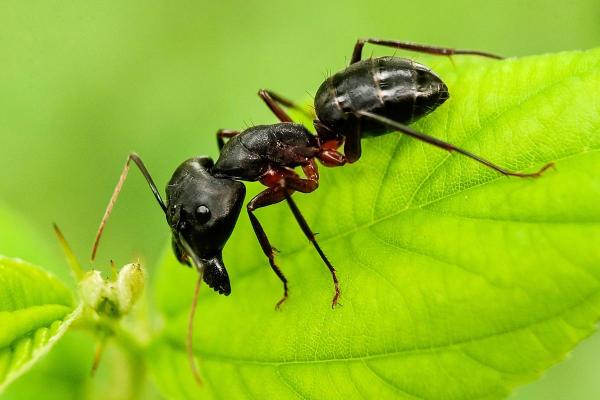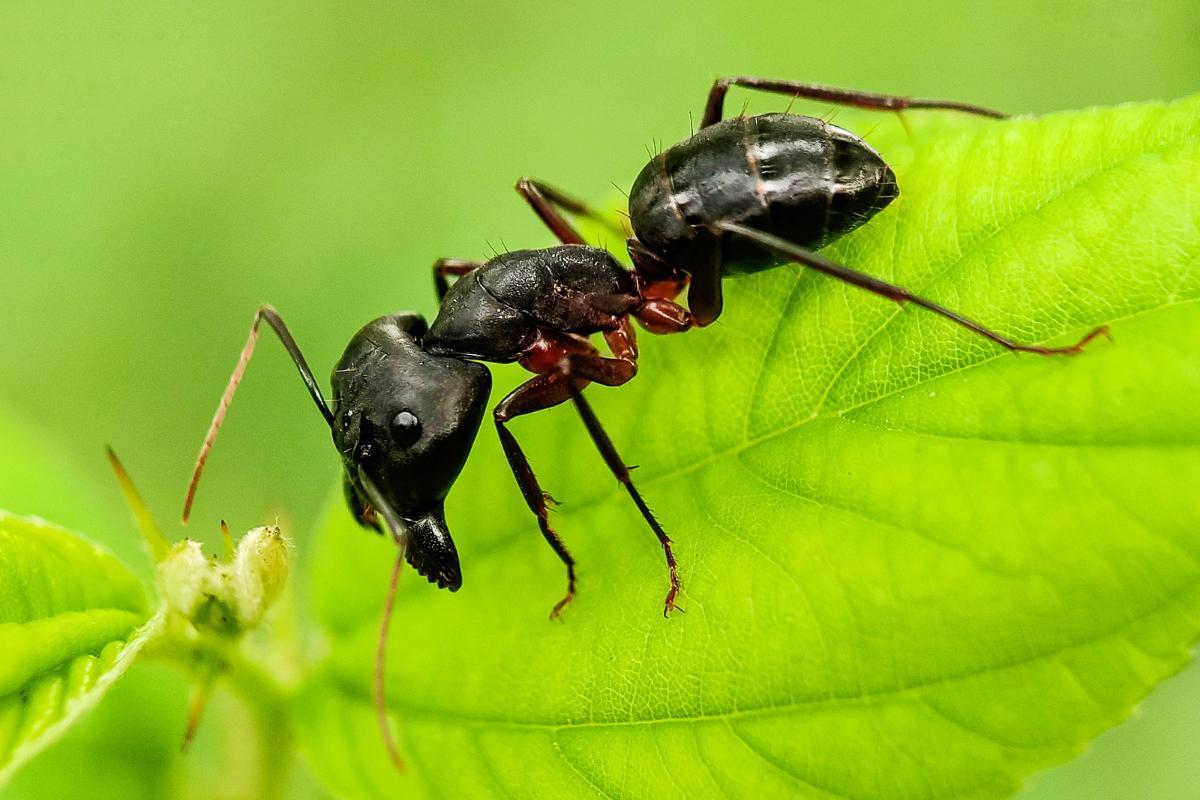How Many Legs Does an Ant Have?


As with all insects, ants have six legs. They are an invertebrate from the order Hymenoptera, an order which also includes bees and wasps. Ants are grouped in the Formicidae family, a diverse group of insects with an almost global distribution. They are known to be eusocial, the highest level of sociability in nature. They exhibit their behavior in colonies known to be a type of superorganism due to their coordinated actions. They do so thanks to a body with the strength and agility that is much greater than their small size suggests, especially when they work together.
AnimalWised explains more by asking how many legs does an ant have? We examine by looking at the physical adaptations of ant legs, how they function and other fun facts.
How many legs do ants have?
The body of ants have various adaptations to allow them to thrive in nature. One of the most fascinating is the presence of a metapleural gland, giving many types of ant species the ability to produce formic acid. This acid acts as an antibiotic to combat fungi and bacteria. This is not a noticeable trait when we see ants in the wild. Much more obvious is the morphological adaptations their bodies have achieved.
Ants are noted for their segmented body. As with all insects, this is made up of the head, thorax and abdomen. They also have a narrow waist known as a petiole. Although all insects generally have a head, thorax and abdomen, the body of ants has specific terms for these sections:
- Head: which contains, the eyes, mouth, antennae and other vital body parts.
- Altitrunk: sometimes known as a true thorax.
- Petiole: the ‘waist’ which is also present in some other hymenopterans.
- Gaster: the end of the body which also contains the stinger.
These parts are also sometimes referred to as the head, mesosoma and metasoma. Combined, these parts are known as tagmas.
As stated in the introduction, ants have six legs. These legs are attached to the mesosoma, i.e. the altitrunk or thorax. Not all ants have wings. In those that do have wings, they are also attached to the mesosoma.
Ants are arthropods, in which the legs are jointed appendages. They are mainly used for walking. Since ants have six legs, hey considered to be hexapods. Each pair of these appendages is attached to each of the three segments of the thorax.
To know about how ants develop into different types of ants within a colony, check out our related article on how ants are born.
Ant leg anatomy
As with those of arthropod animals in general, the ants of legs are made up of various structures. These structures are ordered from the proximal portion or close to the body are:
- Coxa: the part closest to the body, joinging the ant's leg with its thorax.
- Trochanter: corresponds to the joint that joins the femur with the coxa.
- Femur: this is usually the largest part of the ant's leg.
- Tibia: it is a little thinner than the femur, but somewhat longer. In some cases they have structures called spurs. These can be comb-shaped (pectinates) or thorny (also called simple spurs).
- Tarsus: it is the most complex part of the legs in ants, as well as arthropods in general. It is subdivided into several parts, known as tarsomeres. The one closest to the body is the longest, while the distal or last one has nails.
Not only are there many different species of ants, but there are different types of ant within each colony. These are grouped as workers, drones and the queen. There are various physical differences between these types of ant, meaning some might wonder if all ants have the same number of legs. All adult ants will have six legs, i.e. three pairs of two. This is the same for red ants, black ants and all ant species, as well as whether they are a drone, worker or queen.
Learn more about how ants survive with our article on the life expectancy of ants.

Facts about ant legs
Now we know how many legs ants have, we can learn more about how they function with the following characteristics of ant legs:
- They do not have true muscles, but they are highly resistant.
- The legs of ants are of the uniramous type, meaning they are made up of a series of segments united in a single branch without bifurcation.
- The shape of the spurs and the nails are useful for the classification of ants by entomologists.
- Ant legs are specialized for walking and climbing, meaning they can climb almost any surface.
- Ant larvae do not have legs, moving very little during this stage of their development.
- One of the largest legged ants is the giant bull ant (Myrmecia gulosa) which is native to Australia. Despite their larger size they do not have chemical perception and they are not as social as other ants.
- If an ant loses one or two legs, it can still move around properly.
How do ants walk
In addition to the above facts about ants, we can explain a little about how ants use their legs. With the exception of some queen ants and males which have wings and can fly, the rest of the types of ants only have the ability of terrestrial locomotion. Ants have a very stable gait when moving. They do so by forming a triangle-shaped pattern with their legs to propel them.
The middle leg on one side and the front and hind legs on the other are kept on the ground while the others are raised. It is this movement which allows the animal to move forward. They then alternate between those that remain on the ground and those that are raised.
This type of locomotion used by ants offers them many advantages. It means they can move at high speeds and it provides great dexterity when walking. This doesn't mean they always walk fast. They also walk slowly, make turns or climb on various surfaces. We can identify all these movements when we carefully observe an ant in motion.
We can learn more about ant behavior with our article on why ants carry dead insects.
If you want to read similar articles to How Many Legs Does an Ant Have?, we recommend you visit our Facts about the animal kingdom category.
- Hickman, C., Roberts, L., & Parson A. (2000). Comprehensive principles of zoology. McGraw Hill Inter-American: Spain.
- Roof, J. (2001). Formicidae. Animal Diversity Web. Retrieved from: https://animaldiversity.org/accounts/Formicidae/






